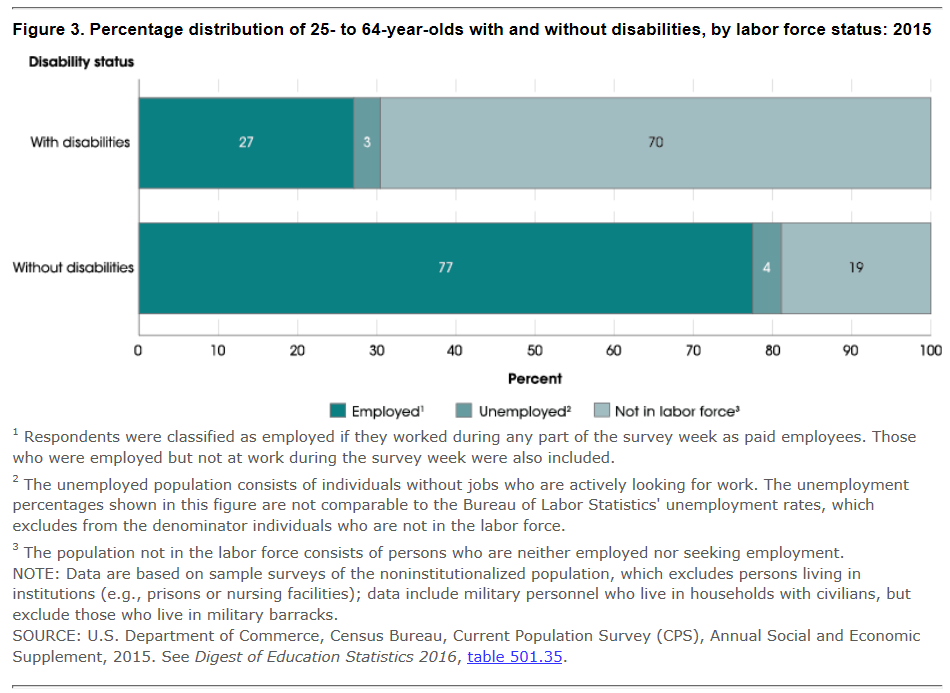There are millions of people living with disabilities in the United States. In 2015, more than 53 million adults or 22 percent of the U.S. population reported having disabilities. Those living with disabilities face challenges they must overcome each and every day. Things like graduating high school, earning a college degree, or obtaining a high paying job can be much more difficult to achieve with a disability. Regardless of the challenges, students with disabilities deserve to receive the same high quality education, access to opportunities, and resources that students without disabilities have. Right now this isn’t happening. In its 2017 Condition of Education (COE) report, the National Center on Education Statistics (NCES) analyzes data on employment status and educational attainment for persons with disabilities. By doing so, NCES shines a light on one of the largest equity gaps in education and the workforce.
The report found, “on average, disability rates are higher among persons with lower levels of education and that individuals with disabilities have lower levels of employment than persons who do not have disabilities.” What does this mean? It means a lot of people with disabilities are not graduating high school, enrolling in college, and earning college degrees—a requirement that is becoming more and more necessary to obtain high paying jobs.
According to the report, while 16 percent of students who didn’t graduate high school had disabilities, only seven percent of those that earned a bachelor’s degree or higher had disabilities. Of those with Bachelor’s degrees or higher, only 45 percent of those with disabilities were employed in 2015 compared to 84 percent of those without disabilities. This is a nearly 40 percentage point gap!
2017 Condition of Education Report, National Center for Education Statistics
Overall, only 27 percent of adults (25-64 years old) with disabilities were employed in 2015. What percentage of adults without disabilities were employed in 2015? According to the 2017 COE report—77 percent. This is a 50 point gap!
2017 Condition of Education Report, National Center for Education Statistics
By looking closely at educational attainment and employment data for persons with disabilities, NCES brings attention to the work that ACT and other leaders in education must continue to do to close equity, opportunity, and achievement gaps and ensure that all students, especially students with disabilities and other underserved learners, achieve education and workforce success.
You can read the first three blogs in our series on NCES’s 2017 COE report here.


